As you know, last year I developed an interest in jam making and canning. Although I’ve found different resources, my main reference has been Marisa McClellan’s blog and book, Food in Jars. Last year I met her briefly at a book signing event in Boston. I’ve always wanted to attend one of her classes but most are based outside of the Boston area. So when I heard she was going to be in town, I jumped at the chance.

Yesterday morning I headed out to Newton Highlands to make Dilly Beans and Spiced Nectarine Jam. I tried pickling once before in an attempt to use up okra from my farm share. I didn’t put those through a water bath and although they were really pretty I used too many hot peppers and I couldn’t eat them.
Dilly Beans
The Dilly Beans recipe on her blog and in her book are slightly different from the one we used in class. But as long as you get the vinegar, water, salt ratios correct then the seasonings can be altered according to taste. We used crushed red pepper flakes, black peppercorns, dill seeds, and fresh garlic cloves. You can add them in whatever combination you desire. Or you could add other things like cumin seeds or cayenne pepper. It’s really up to you.
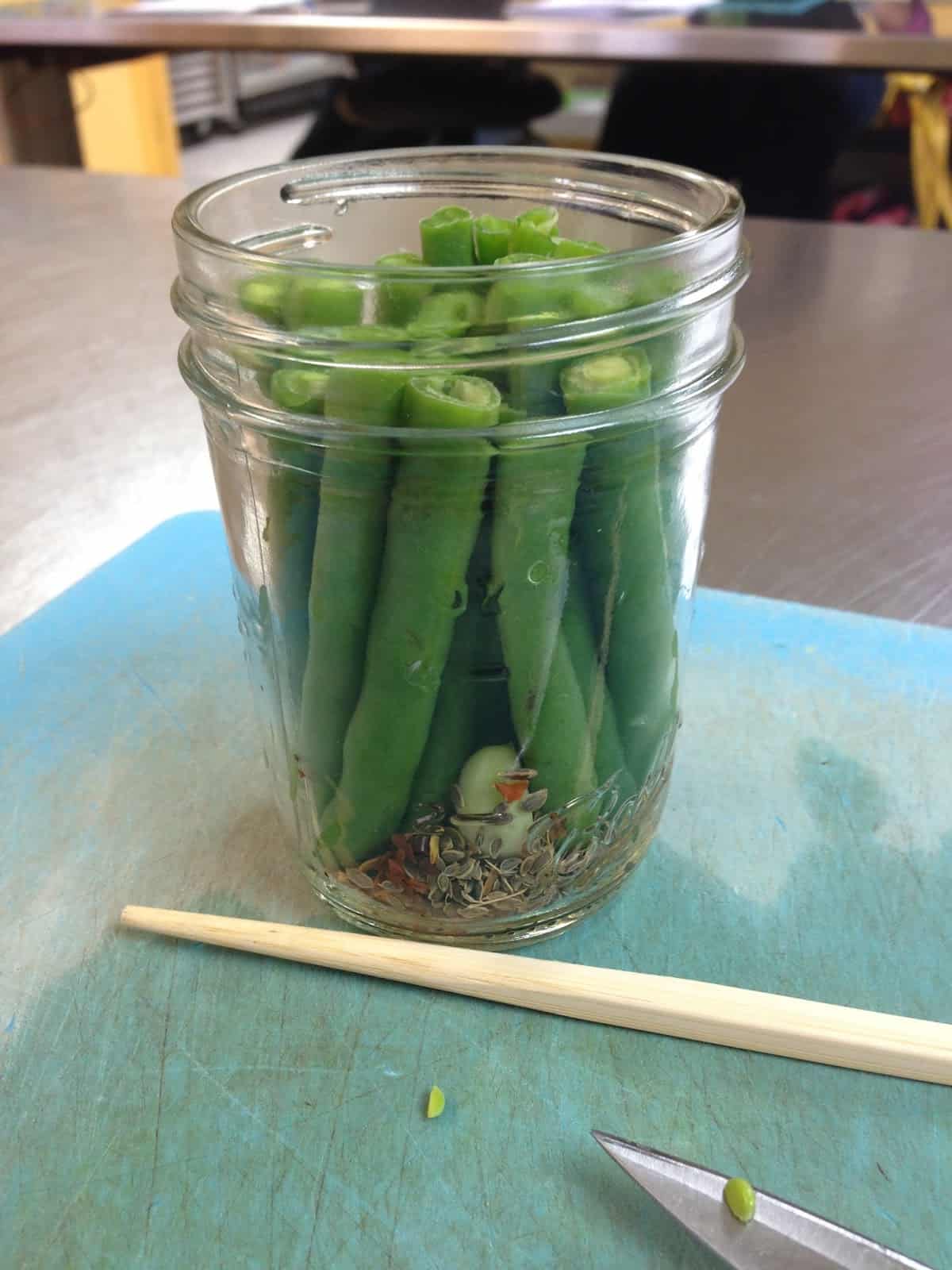
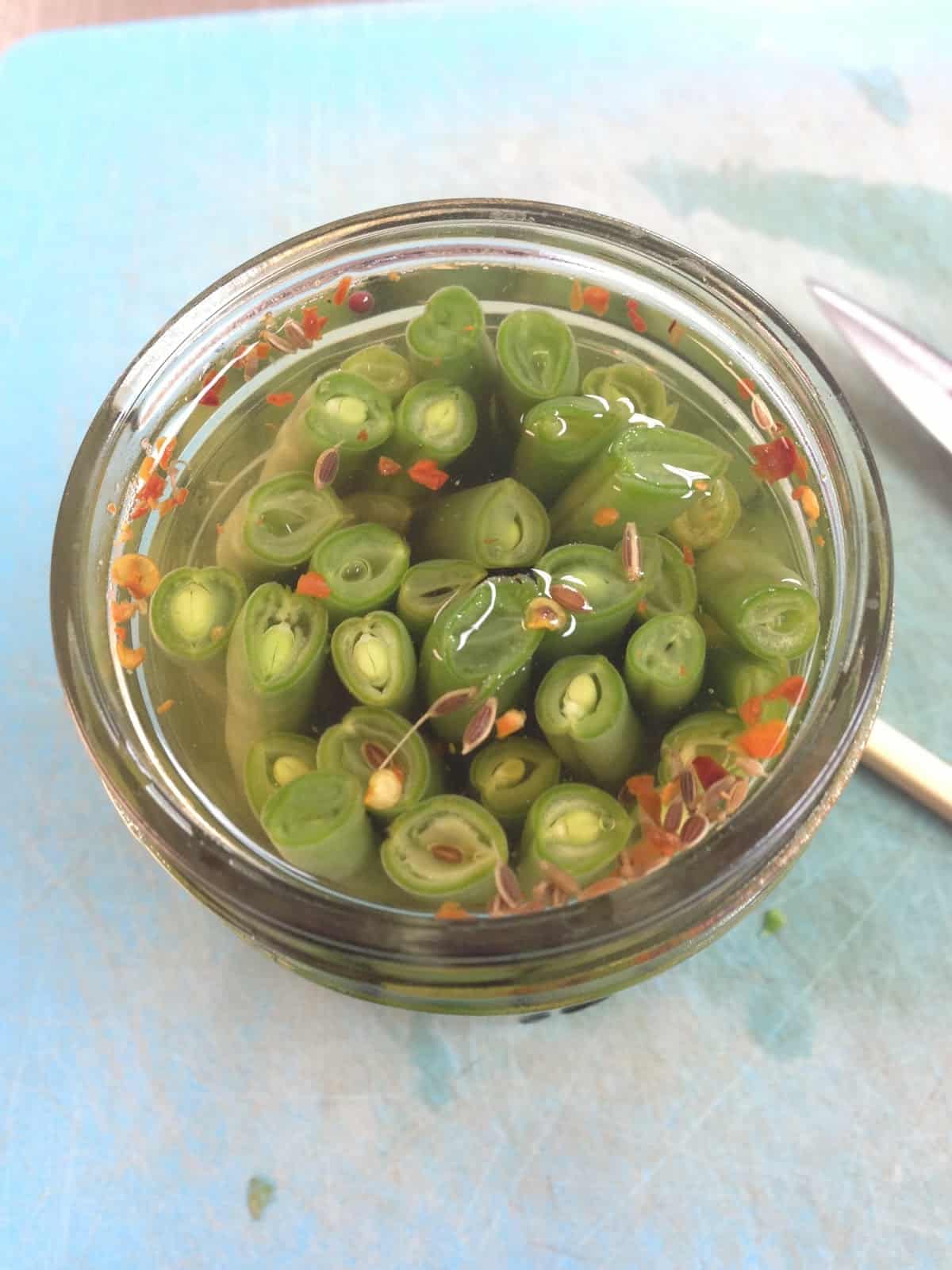
We used half-pint jars in class. I’ve seen the pint-and-a-half jars in stores and I think those might be nice to use so you don’t have to cut down the green beans. Marisa told us that we should wait a week to allow the beans to fully absorb the flavors.
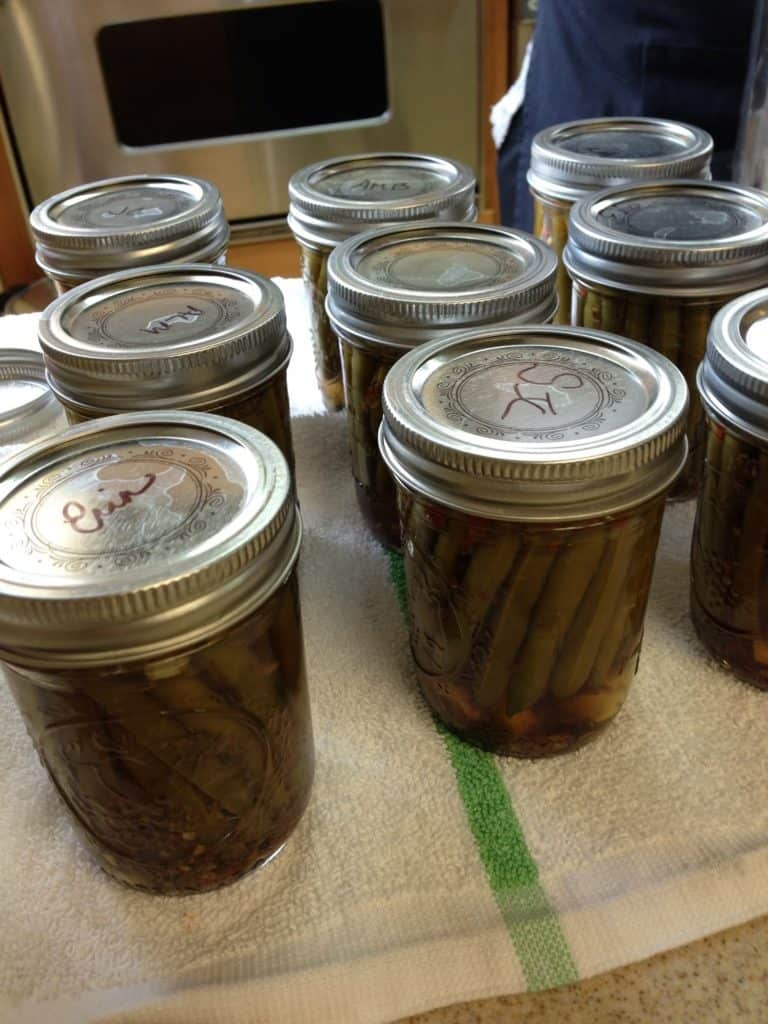
Spiced Nectarine Jam
The Spiced Nectarine Jam recipe is posted on her blog.
I will say that with the whole class chopping nectarines – only two per person – we quickly had more than enough chopped fruit.
I think the most valuable thing I learned was how to tell the jam’s set and what exactly I’m looking for when using the “sheeting” testing method. Unfortunately I don’t have a picture but the two things are to watch for bigger, wider drops that are more thick and viscous.
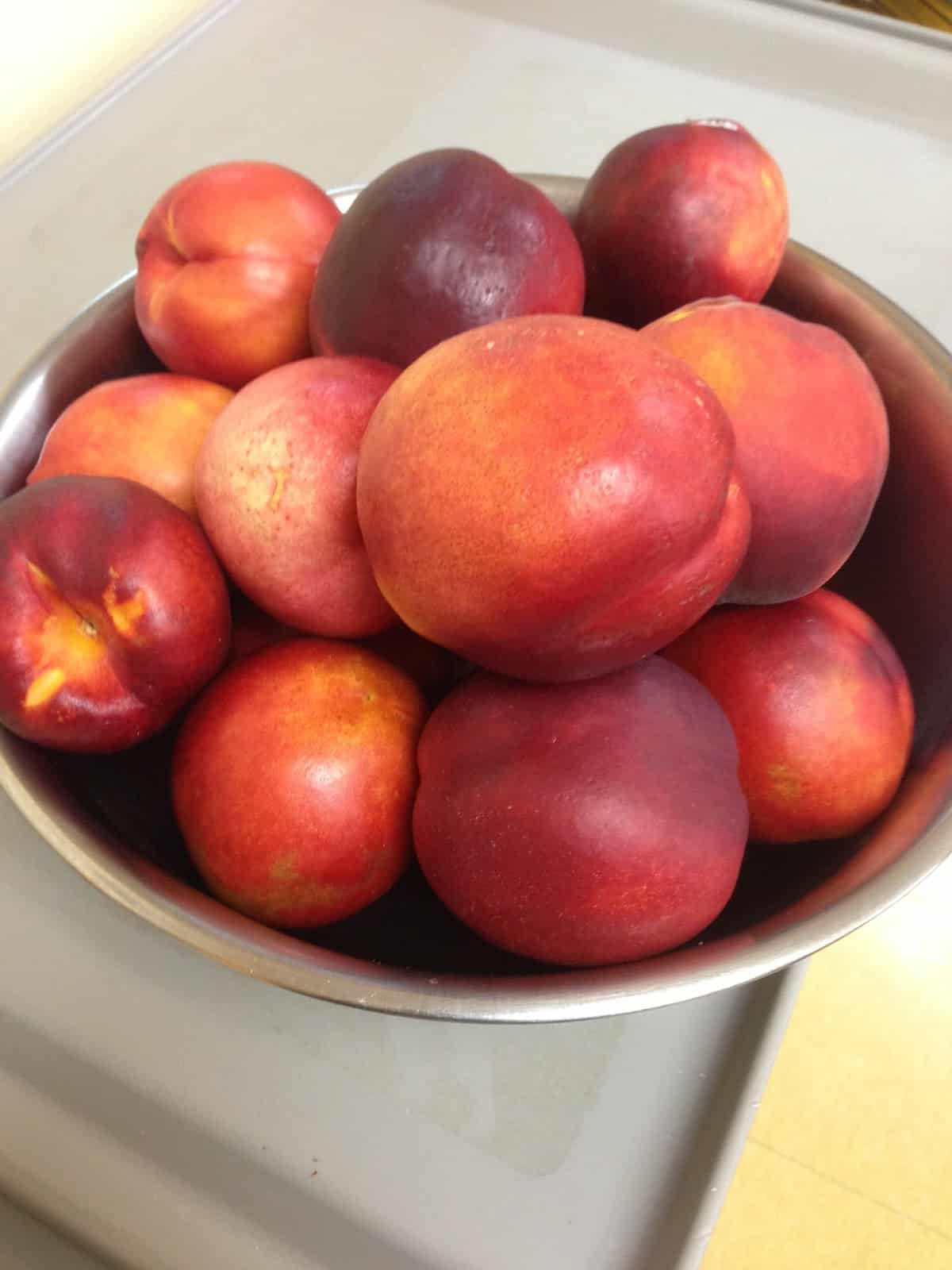
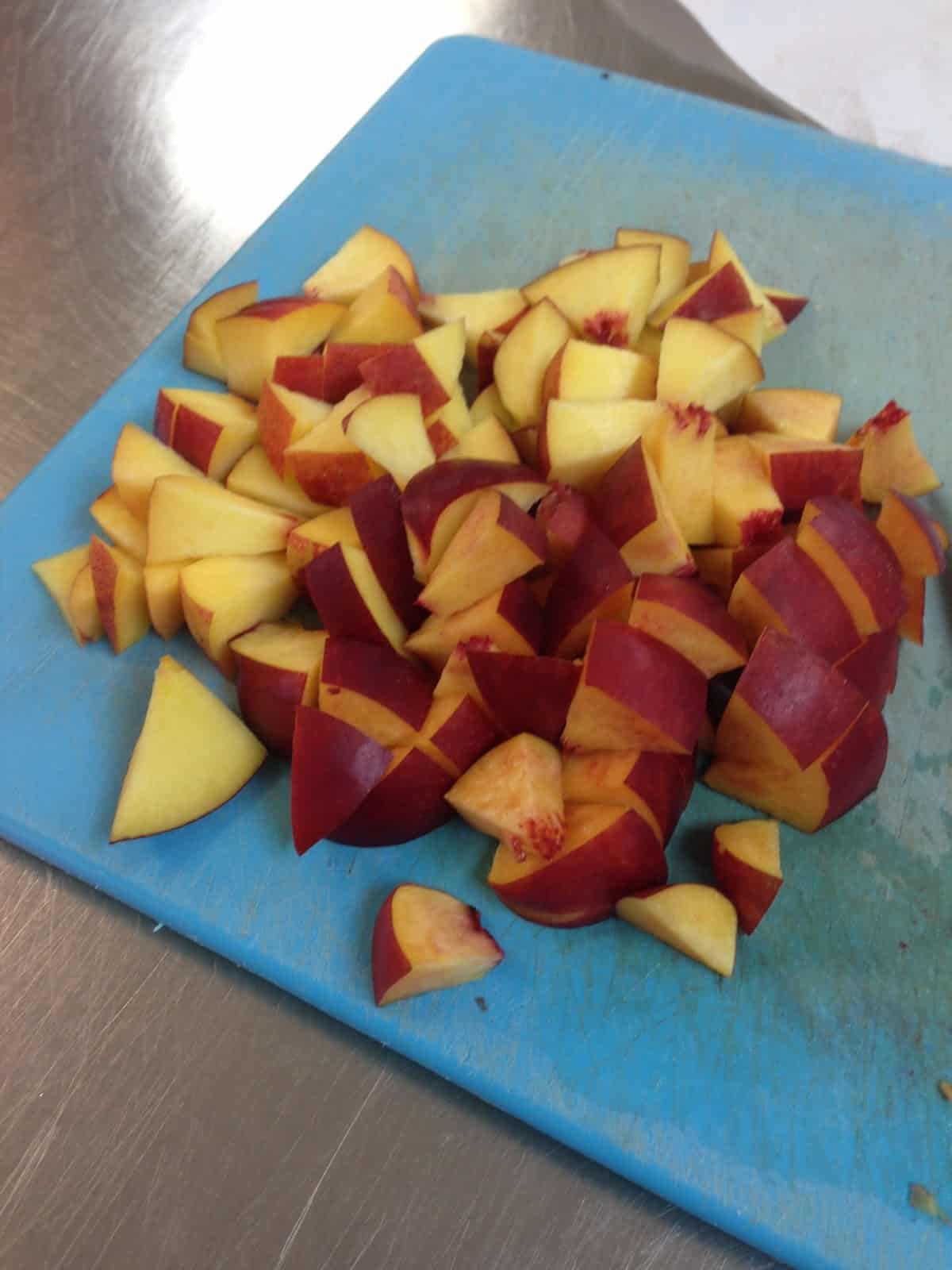
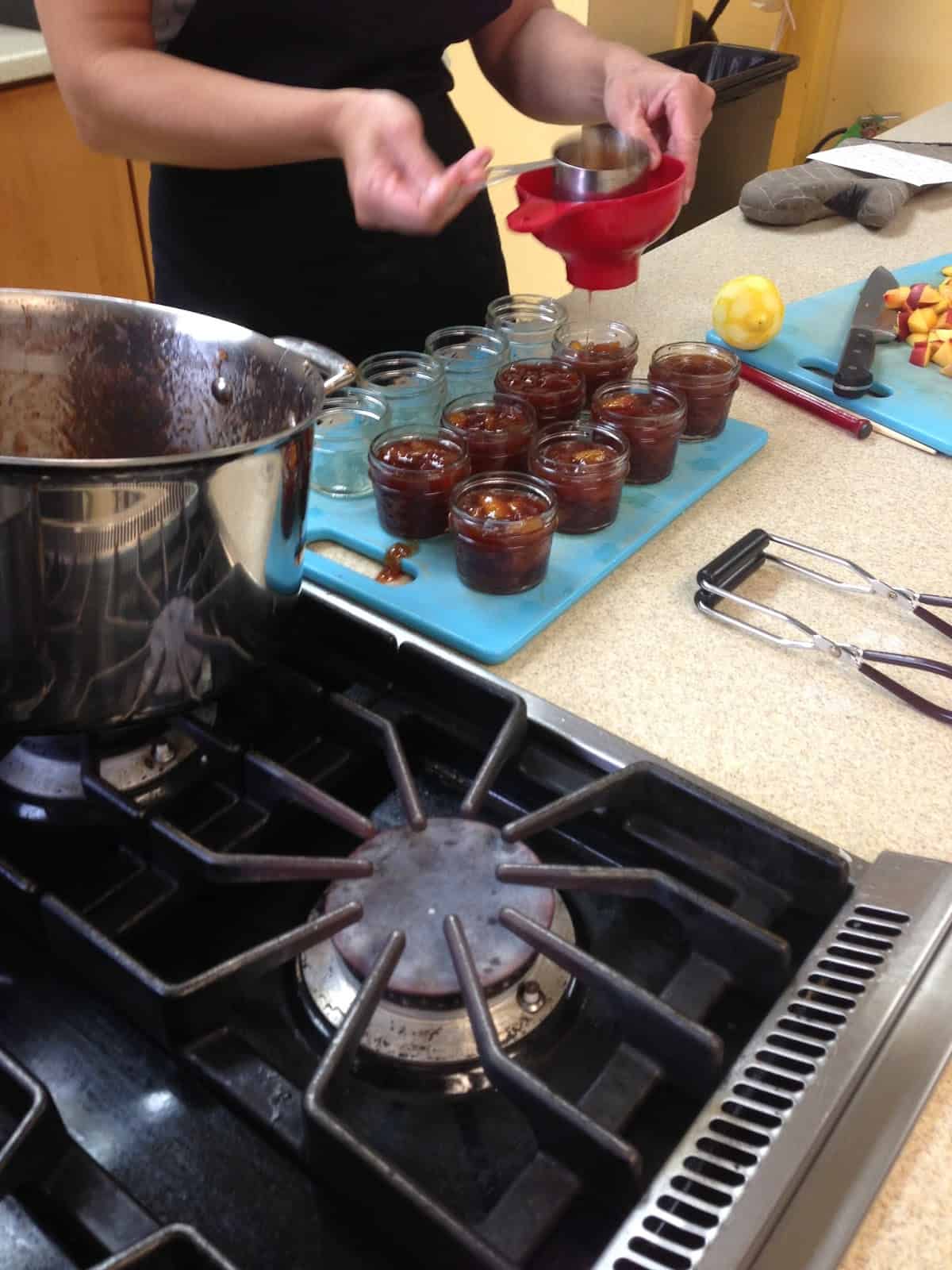
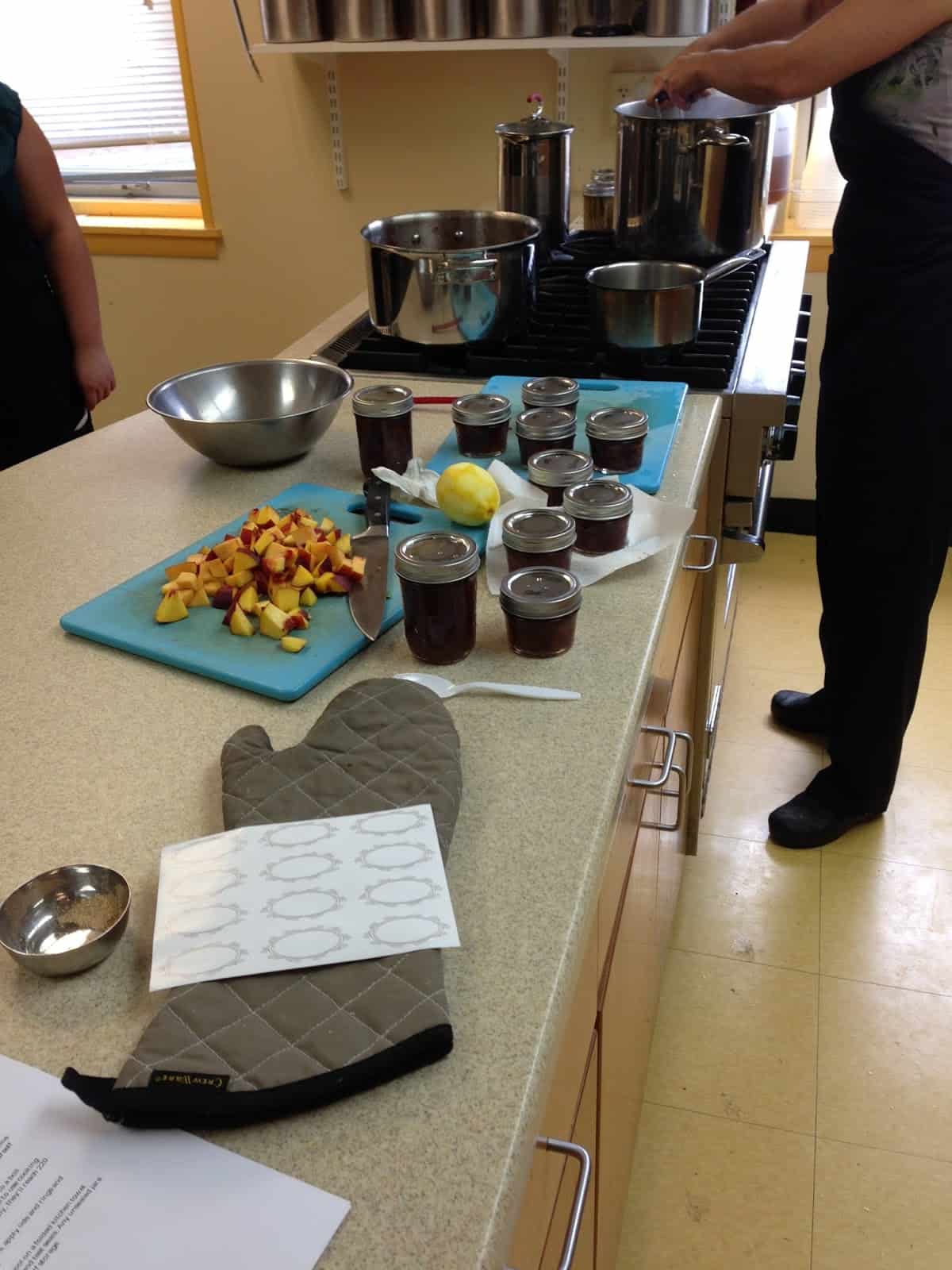
A great class
Throughout the class Marisa covered all topics related to canning – jars, lids, favorite tools, types of pectin, how to deal with different types of fruits and vegetables, etc. She’s a wonderful, warm person who shares her love and knowledge of canning so easily. I know she has quite a busy schedule and she’s finishing up her next book. I’m not sure when she’ll be back in Boston again but I hope to see her again.
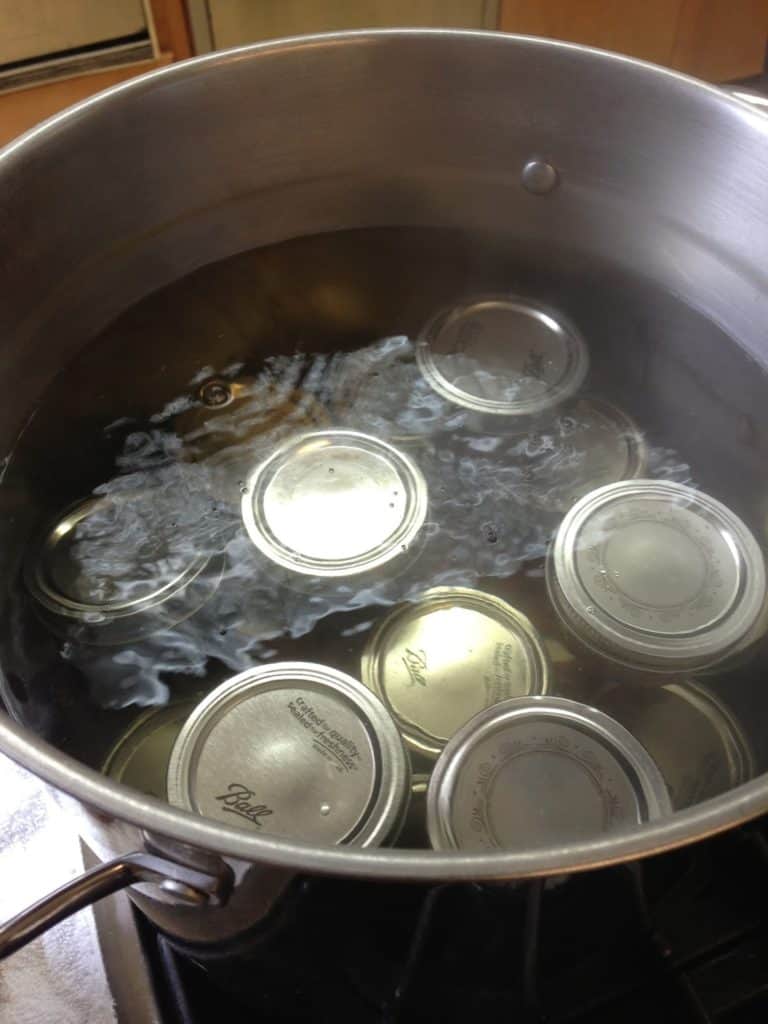
Some of the things I learned:
- When pickling it’s not necessary to have the jars just out of the boiling water because the pickling liquid won’t crack the jars the way hot jam might
- It’s okay to handle the edges of the lids with my hands
- It’s okay to stack jars on top of each other in an offset pattern when doing the water bath
- Be sure the acidity in the vinegar is at least 5% – many commercial brands are only 4%
- Salt is a critical part of the preservation in pickles and can’t be reduced
- Chopsticks work well for getting out air bubbles and are better than metal objects, like a knife, because they don’t scratch the sides of the jars – even microscopic scratches may affect the longevity of your jars
- I finally understand what I’m looking for when testing the set of the jam using the “sheeting” method
- I also learned that if a jam doesn’t go long enough for a firm set it doesn’t affect the food safety of the jam

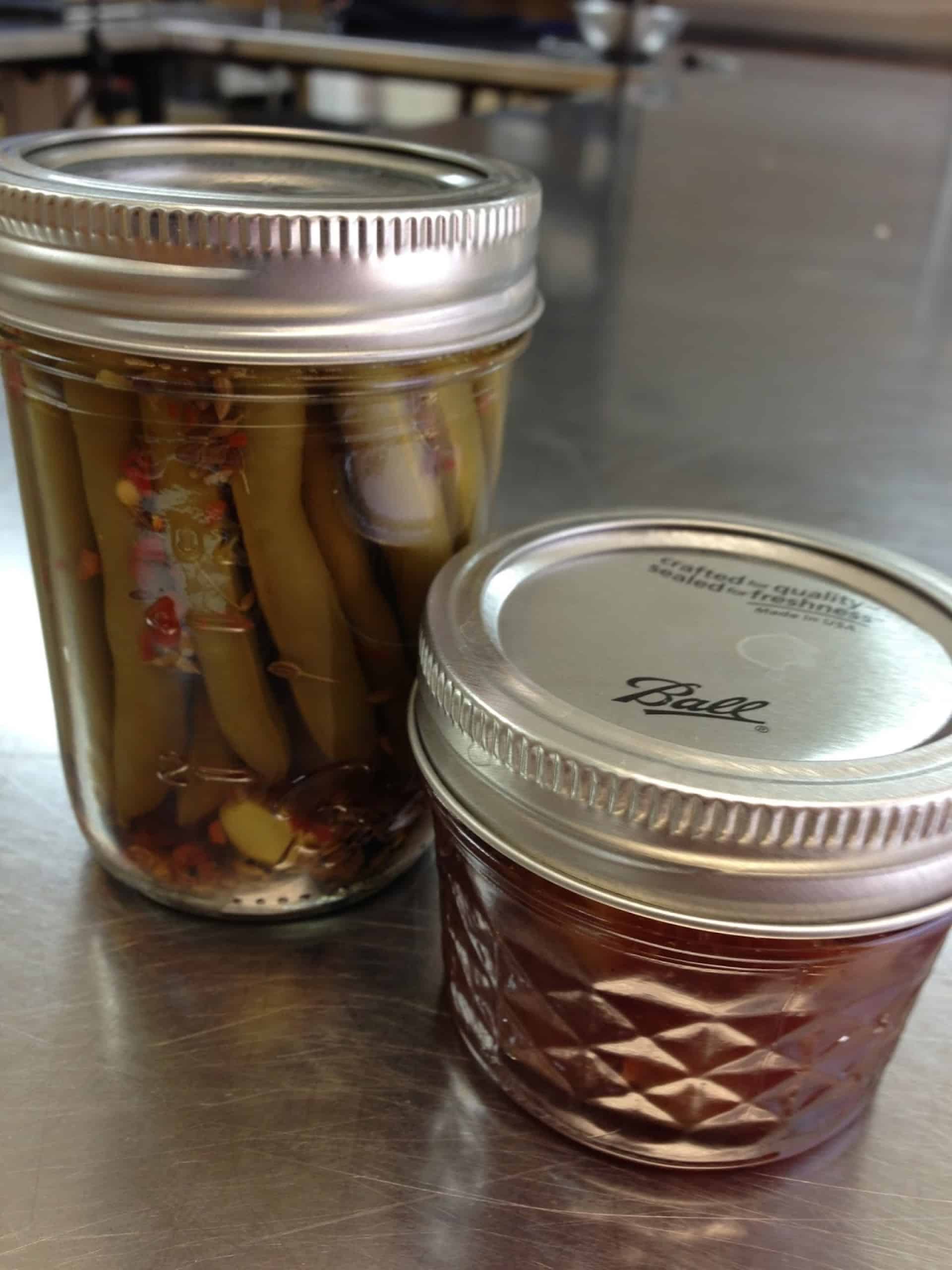
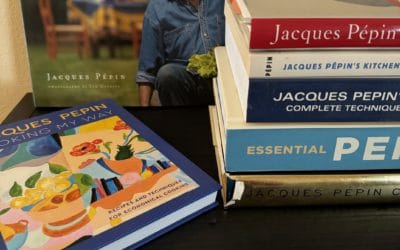
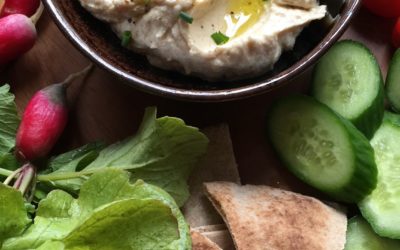

0 Comments